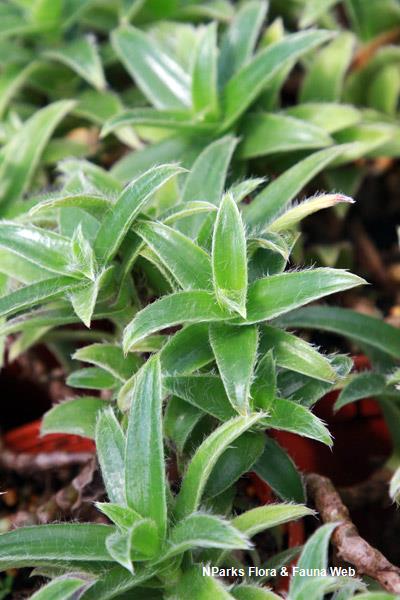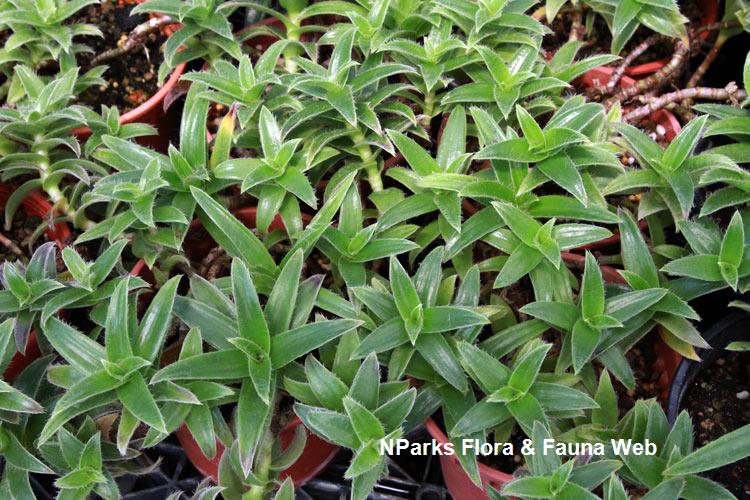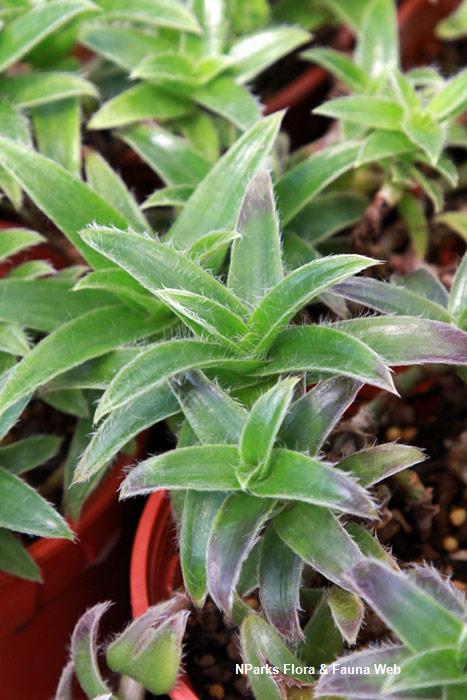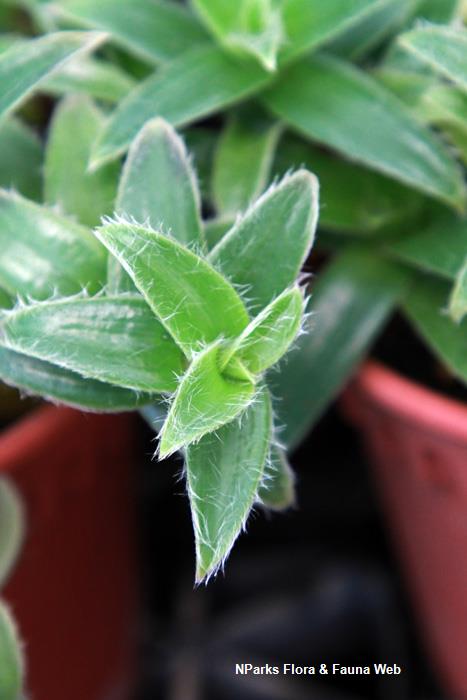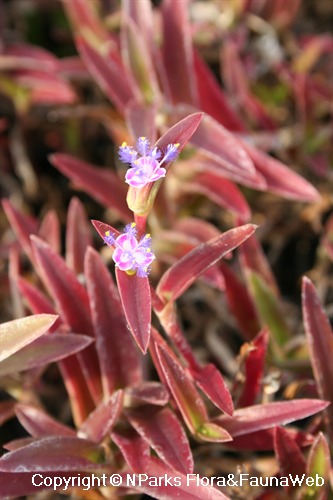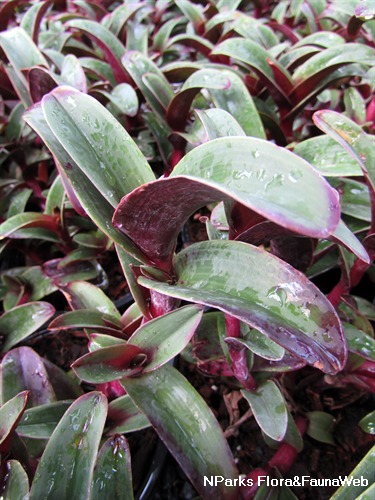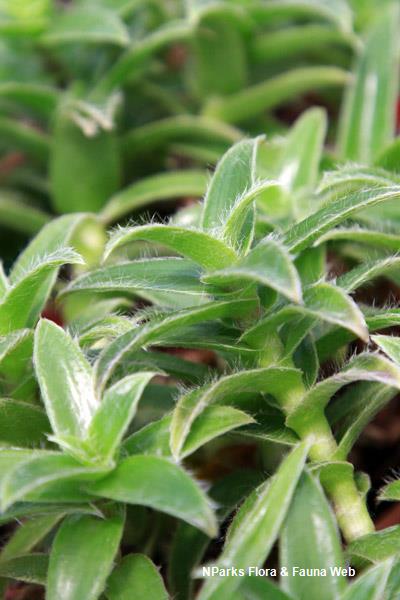
Back
Cyanotis somaliensis C.B.Clarke
| Family Name: | Commelinaceae |
| Common Name: | Pussy Ears, Furry Kittens, Kitten Ears |
This plant has thick, fleshy leaves with soft, white hairs along the leaf margin.
Name
Classifications and Characteristics
| Plant Division | Angiosperms (Flowering Seed Plants) |
|---|---|
| Plant Growth Form | Herbaceous Plant |
| Lifespan (in Singapore) | Perennial |
| Mode of Nutrition | Autotrophic |
| Maximum Height | 12 cm |
Biogeography
| Native Distribution | Somalia |
|---|---|
| Native Habitat | Terrestrial |
| Preferred Climate Zone | Desert / Arid |
| Local Conservation Status | Non-native |
Description and Ethnobotany
| Growth Form | Herbaceous, trailing plant up to 12 cm tall. |
|---|---|
| Foliage | Lance-shaped leaves are lined with long white hairs on the leaf margin. |
| Flowers | Light purple flowers have yellow, pollen-producing stamens. |
Landscaping Features
| Desirable Plant Features | Ornamental Foliage |
|---|---|
| Landscape Uses | Suitable for Hanging Baskets, Container Planting, Interiorscape/ Indoor Plant |
Plant Care and Propagation
| Light Preference | Full Sun, Semi-Shade |
|---|---|
| Water Preference | Little Water |
| Plant Growth Rate | Moderate to Slow |
| Rootzone Tolerance | Drought Tolerant |
Foliar
| Foliage Retention | Evergreen |
|---|---|
| Mature Foliage Colour(s) | Green |
| Mature Foliage Texture(s) | Hairy / Hirsute |
| Young Flush Texture(s) | Hairy / Hirsute |
| Foliar Type | Simple / Unifoliate |
| Foliar Arrangement Along Stem | Spiral |
| Foliar Attachment to Stem | Sessile |
| Foliar Shape(s) | |
| Foliar Margin | Ciliate / Hairy |
| Foliar Apex - Tip | Acute |
| Foliar Base | Rounded / Obtuse |
| Typical Foliar Size | 15 cm |
Floral (Angiosperm)
| Flower Colour(s) | Blue, Purple |
|---|---|
| Flower Grouping | Cluster / Inflorescence |
| Flower Location | Axillary |
Image Repository
Others
| Master ID | 34391 |
|---|---|
| Species ID | 8804 |
| Flora Disclaimer | The information in this website has been compiled from reliable sources, such as reference works on medicinal plants. It is not a substitute for medical advice or treatment and NParks does not purport to provide any medical advice. Readers should always consult his/her physician before using or consuming a plant for medicinal purposes. |

